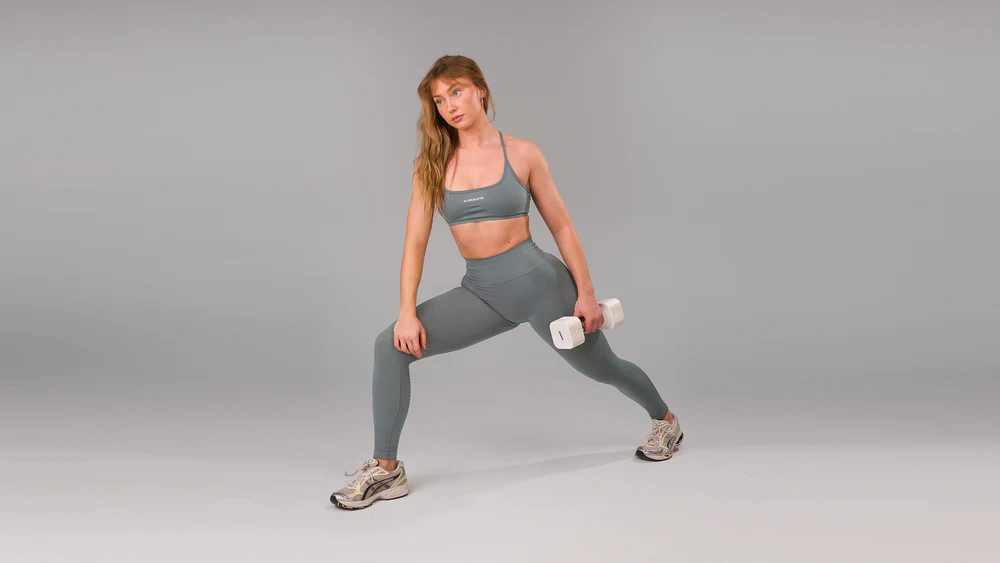Workout Sets – If you’ve ever followed a workout routine or watched fitness videos, you’ve likely heard terms like “3 sets of 10 reps.” But what exactly is a workout set?
How many should you be doing? And how can manipulating sets help you build strength, endurance, or muscle?
In this guide, we’ll break down everything you need to know about workout sets—from basic definitions to advanced strategies—so you can train smarter, not just harder.
What Is a Workout Set?
In fitness, a set refers to a group of repetitions (reps) of a specific exercise performed without rest. For example:
3 sets of 10 reps of squats means you’ll perform 10 squats, rest, and then repeat that process two more times.
Sets allow you to organize your training volume and intensity. They also play a big role in achieving specific fitness goals, like building strength, muscle mass, or endurance.
Why Workout Sets Matter
Whether you’re lifting weights, doing bodyweight training, or using resistance bands, structuring your routine into sets has several benefits.
Trackable Progress
Sets and reps give structure to your workouts, allowing you to measure progress over time.
Target Specific Goals
Different set structures trigger different responses in your body—strength, hypertrophy (muscle growth), or endurance.
Balanced Workload
They prevent overtraining or undertraining by helping you manage the volume and intensity of each exercise.
Common Types of Workout Sets
Here are the most common types of sets you’ll encounter, especially in strength training:
- Straight Sets
Doing the same number of reps and weight across all sets (e.g., 3×10 bench press with 100 lbs).
- Pyramid Sets
You increase or decrease the weight each set:
Ascending pyramid: Increase weight, decrease reps
Descending pyramid: Start heavy, then drop weight
- Supersets
Two exercises done back-to-back with no rest. Can be:
Antagonist superset (e.g., biceps + triceps)
Same muscle superset (e.g., two chest moves)
- Drop Sets
Start with a heavy weight, then reduce the weight immediately after failure and continue with more reps.
“As Many Reps As Possible” in a given time or until failure—great for endurance and fat burn.
How Many Sets Should You Do?
The number of sets you perform depends on your goal:
- Goal Sets per Exercise Reps Rest
- Strength 3–6 1–6 2–5 min
- Hypertrophy (Muscle Growth) 3–5 6–12 30–90 sec
- Endurance 2–4 12–20+ 30 sec
- Fat Loss 3–4 8–15 15–60 sec
Tip: More isn’t always better. Focus on quality reps, not just the quantity of sets.
Sample Workout Set Structures by Goal
For Muscle Growth (Hypertrophy)
Exercise: Dumbbell Chest Press
Sets x Reps: 4 sets x 10–12 reps
Rest: 60 seconds
Emphasize time under tension
Use moderate to heavy weight
Control both the lowering and lifting phases
For Strength
Exercise: Barbell Deadlift
Sets x Reps: 5 sets x 5 reps
Rest: 2–3 minutes
Heavy loads (80–90% of your 1-rep max)
Longer rest for nervous system recovery
Focus on explosive form and good technique
For Fat Burn
Exercise: Kettlebell Swings + Jump Squats (Superset)
Sets x Reps: 3 sets x 15 reps each
Rest: 30 seconds
Circuit-style or supersets work best
Keeps heart rate high
Shorter rest to maintain intensity
How to Progress Your Workout Sets
Progressive overload is key to gains—your muscles need to be challenged to grow.
Here’s how to level up your sets:
Add weight: Increase the load gradually
Add sets or reps: Go from 3 sets to 4, or 10 reps to 12
Shorten rest: Increase intensity without changing weight
Change tempo: Slow down reps to increase time under tension
Rest Between Sets: Why It Matters
Rest isn’t just about catching your breath. It’s part of your strategy.
Training Type Recommended Rest
Strength 2–5 minutes
Hypertrophy 30–90 seconds
Endurance 15–60 seconds
HIIT / Fat Burn 15–45 seconds
Mistakes to Avoid with Workout Sets
Too many sets per exercise
More than 5–6 sets can lead to burnout or overtraining.
Not tracking your sets
Use an app, journal, or notepad to record weight and reps.
Poor form just to finish sets
Sacrificing form for volume increases injury risk.
No variation over time
Doing the same sets week after week stalls progress.
How Workout Sets Fit into a Weekly Schedule
You can structure your weekly split based on how many days you train. Here’s an example:
Day Workout Focus Sets per Exercise
Monday Push (Chest, Shoulders, Triceps) 3–4
Tuesday Pull (Back, Biceps) 3–4
Wednesday Rest or Cardio —
Thursday Legs (Quads, Hamstrings, Glutes) 3–5
Friday Upper Body 3
Saturday HIIT or Core 2–3
Sunday Rest
Final Thoughts
Workout sets are more than numbers—they’re a framework for progress, control, and purpose in your training. Whether your goal is to get stronger, leaner, or more muscular, structuring your workouts with the right number and type of sets can make all the difference.
So the next time you’re at the gym or training at home, don’t just move weights—track your sets, push your limits, and evolve your routine over time.









